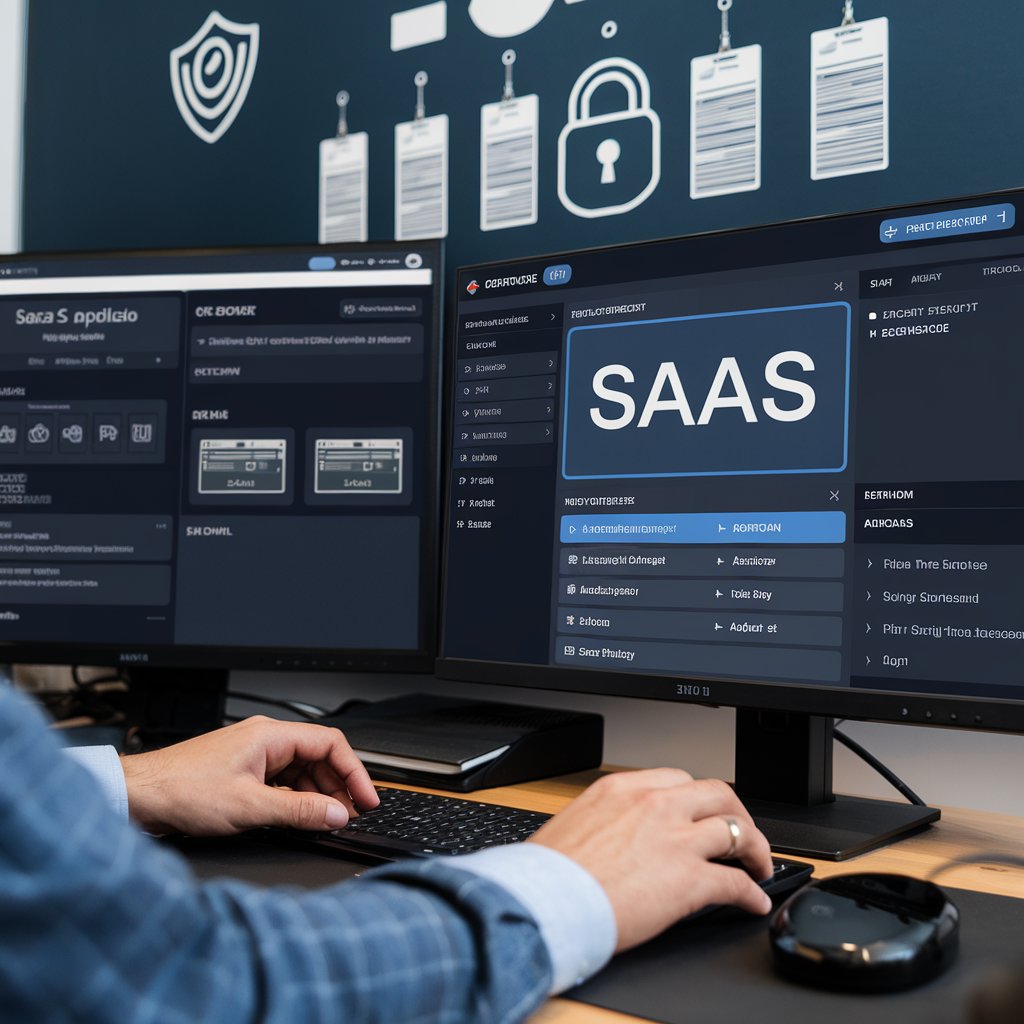UA
6 Min Read
Understanding the SaaS Security Challenge
SaaS applications bring unique security challenges:
Shared Responsibility: Security is a shared responsibility between you and your SaaS provider. Understanding this model is critical, as you are responsible for configuring your side of the application and how your users utilize it.
Data Exposure: Sensitive data stored in SaaS applications can be vulnerable if not properly protected.
Identity and Access Management: Managing user identities and access rights across multiple SaaS applications can be complex.
Shadow IT: Unauthorized use of SaaS applications outside of IT's visibility can create security risks.
API Security: Weaknesses in APIs used by SaaS applications can create entry points for attackers.
Misconfigurations: Incorrectly configured SaaS applications can expose data and create security vulnerabilities.
Third-Party Integrations: Vulnerabilities in third-party apps integrated with your SaaS platforms can create risks.
Best Practices for Securing Your SaaS Applications
Here are actionable strategies for securing your SaaS applications:
Understand the Shared Responsibility Model:
What it is: Clearly understand the security responsibilities of your SaaS provider and your organization.
How it helps: Ensures you are aware of the security controls and features you need to implement.
Best Practices: Review your SaaS provider’s security documentation and compliance certifications. Understand which security aspects they cover and which you are responsible for.
Implement Strong Identity and Access Management (IAM):
What it is: Use a robust IAM system to control access to your SaaS applications.
How it helps: Prevents unauthorized access, enforces password policies, and enables strong authentication mechanisms.
Best Practices:
Implement multi-factor authentication (MFA) for all users.
Enforce strong password policies.
Use role-based access control (RBAC) to grant access based on user roles.
Regularly review and revoke access privileges as needed.
Key Tools: IAM solutions like Okta, Azure Active Directory, Ping Identity.
Secure User Devices:
What it is: Secure the devices that users use to access SaaS applications.
How it helps: Reduces the risk of compromised devices being used to access your SaaS data.
Best Practices:
Enforce strong password policies on devices.
Use endpoint security tools for malware protection.
Enable device encryption.
Implement mobile device management (MDM) to manage and secure employee devices.
Key Tools: Endpoint detection and response (EDR) solutions, MDM platforms.
Control Access with Conditional Access Policies:
What it is: Use conditional access policies to control access to SaaS apps based on user location, device compliance, and other factors.
How it helps: Ensures that access is only granted when specific conditions are met.
Best Practices:
Define conditional access policies based on your business requirements.
Use location-based controls to prevent access from unauthorized areas.
Use device compliance checks to ensure only secure devices can access sensitive data.
Key Tools: Conditional access features provided by your IAM solution.
Enable Single Sign-On (SSO):
What it is: Use SSO to streamline authentication across multiple SaaS applications.
How it helps: Provides a more secure and convenient login process for users and reduces the risk of password reuse.
Best Practices: Implement SSO using secure protocols like SAML or OAuth.
Regularly Monitor and Audit Activity:
What it is: Monitor user activity and security logs for suspicious patterns.
How it helps: Detects anomalies, potential security incidents, and compliance violations.
Best Practices:
Use cloud access security brokers (CASBs) to monitor user activity.
Set up alerts for suspicious login attempts or data access.
Regularly review audit logs and security reports.
Key Tools: CASB solutions, SIEM systems.
Utilize Cloud Access Security Brokers (CASBs):
What it is: CASBs provide visibility and control over your SaaS applications.
How it helps: Enforces security policies, monitors user activity, and detects shadow IT.
Best Practices:
Implement a CASB that supports your SaaS applications.
Use CASB policies to enforce data security, access control, and threat prevention.
Key Tools: CASB solutions like McAfee MVISION Cloud, Netskope, Microsoft Cloud App Security.
Secure APIs and Third-Party Integrations:
What it is: Protect the APIs used by your SaaS applications and control the security of third-party integrations.
How it helps: Prevents attackers from using vulnerabilities in APIs and third-party apps to gain access to your data.
Best Practices:
Use API authentication and authorization.
Limit third-party access to your data.
Conduct security assessments of third-party integrations.
Regularly update integrations with the latest security patches.
Implement Data Loss Prevention (DLP):
What it is: Use DLP tools to prevent sensitive data from leaving your control.
How it helps: Prevents unauthorized data exfiltration and enforces data security policies.
Best Practices:
Implement DLP policies for your SaaS applications.
Use data classification to identify sensitive data.
Monitor data flows and user activities.
Key Tools: DLP solutions like Symantec DLP, Forcepoint DLP, McAfee DLP.
Regularly Review SaaS Security Settings:
What it is: Periodically review the security configurations of your SaaS applications.
How it helps: Ensures that security settings are properly configured and aligned with best practices.
Best Practices:
Schedule regular reviews of your SaaS configurations.
Follow the recommendations provided by your SaaS vendor.
Address any misconfigurations promptly.
Educate Your Users:
What it is: Train your employees on SaaS security best practices.
How it helps: Reduces the risk of human error, including phishing, password reuse, and social engineering.
Best Practices:
Provide regular security awareness training.
Teach employees how to identify phishing attacks.
Promote the use of strong passwords and secure authentication methods.
Conclusion:
Securing SaaS applications is a critical task for any business operating in the cloud. By understanding the shared responsibility model and implementing these best practices, you can significantly improve your SaaS security posture. A proactive, layered approach is essential for protecting your data, your users, and your business from ever-evolving cyber threats. audit3aa
Join our newsletter list
Sign up to get the most recent blog articles in your email every week.
You can copy our materials only after making sure that your services are safe.
This site is protected by reCAPTCHA and the Google Privacy Policy and Terms of Service apply.










